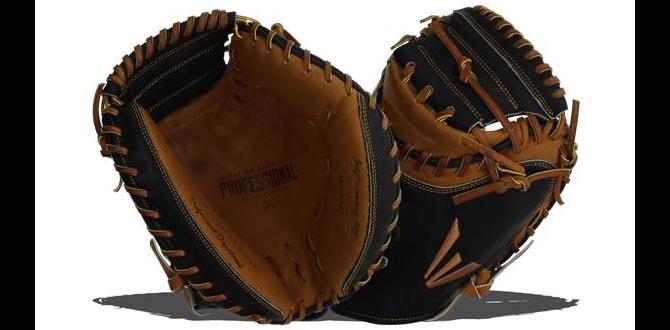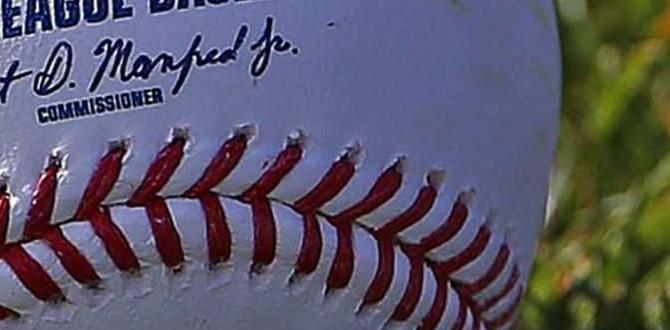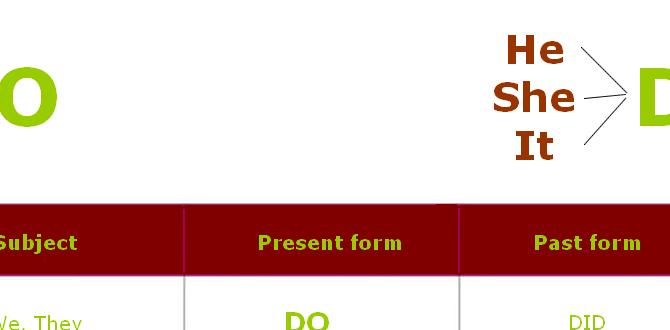Rawlings youth catcher gear combo sets provide young players with the essential protective equipment needed to step behind the plate safely and confidently. These all-in-one packages ensure critical pieces fit together for optimal performance and peace of mind for parents.
Stepping behind home plate is a big deal in baseball! It’s a position that needs a lot of courage and the right gear. For young players just starting out, figuring out what catcher’s equipment to buy can feel a bit overwhelming. Which pieces are most important? How do they all work together? Don’t worry, we’ve got your back! This guide is here to make choosing the perfect Rawlings youth catcher gear combo set super simple. We’ll break down what makes a great set and why it’s crucial for protecting young athletes as they learn the game.
Why a Rawlings Youth Catcher Gear Combo Set is a Home Run
When your young slugger decides to take on the crucial role of catcher, safety and confidence are key. Rawlings, a name trusted by baseball players for ages, offers fantastic youth catcher gear combo sets. These sets are designed specifically for young athletes, ensuring a proper fit and essential protection. Instead of buying each piece separately – a helmet, a chest protector, and shin guards – a combo set gives you the core components all at once. This not only simplifies the shopping process but also ensures the gear is designed to work together for maximum safety and comfort.
Choosing a combo set means you’re getting a coordinated collection of equipment. This helps young catchers feel more secure and ready to play. It’s all about giving them the best start possible, with gear that encourages them to focus on their game, not on feeling unsafe or uncomfortable.
What’s Inside a Typical Rawlings Youth Catcher Gear Combo Set?
Rawlings youth catcher gear combo sets are thoughtfully put together to cover the most critical protective needs of a young player behind the plate. While specific models might vary slightly, you can generally expect these three fundamental pieces:
- Youth Catcher’s Helmet: This is the first line of defense for the head.
- Youth Chest Protector: Designed to shield the torso from errant pitches or foul balls.
- Youth Shin Guards: Protects the shins and knees from impacts.
Each piece in a quality combo set is crafted with young players in mind, considering their size, flexibility, and the need for effective protection without hindering movement. Let’s dive a bit deeper into each component.
The Catcher’s Helmet: Your Young Player’s Protective Crown
The catcher’s helmet is arguably the most vital piece of equipment. It combines a protective helmet with a face mask, offering comprehensive protection for the head, face, and throat. For youth players, it’s essential that this helmet:
- Fits Snugly: A loose helmet can shift during play, compromising protection.
- Offers Good Visibility: The mask shouldn’t obstruct the player’s view of the game.
- Is Well-Ventilated: Reduces heat buildup, keeping the player more comfortable.
- Meets Safety Standards: Look for helmets that adhere to industry safety certifications.
Rawlings youth helmets often feature a streamlined design for better peripheral vision and an adjustable chin strap for a secure fit. Some models include a removable mask for cleaning or preference.
The Chest Protector: Shielding the Core
The chest protector is designed to absorb the impact of high-speed pitches and foul tips that might get past the catcher. For youth players, a good chest protector should:
- Provide Broad Coverage: Protect the chest, sternum, and upper abdomen.
- Be Flexible: Allow for natural throwing and receiving motions.
- Offer Adequate Padding: Cushion impacts without being overly bulky.
- Feature Breathable Materials: Help manage sweat and heat.
Rawlings chest protectors often use multi-layer padding systems and an adjustable strapping system at the back to ensure a snug and secure fit that stays in place during dynamic movements.
Shin Guards: Protecting the Lower Extremities
Shin guards are crucial for protecting the shins, knees, and feet from foul balls, wild pitches, and collisions. When looking for youth shin guards, consider:
- Full Leg and Knee Coverage: They should extend from the ankle up to just below the knee.
- Adjustable Straps: For a secure and customizable fit.
- Durable Outer Shell: To withstand impacts.
- Comfortable Inner Padding: To absorb shock and prevent chafing.
Rawlings youth shin guards typically feature a robust shell with strategically placed padding and multiple D-ring straps for easy on and off, ensuring they stay put without becoming a distraction.
Choosing the Right Size: The Key to Comfort and Safety
Getting the right size for your young catcher’s gear is not just about comfort; it’s essential for safety and performance. Gear that is too loose can shift, leaving vulnerable areas exposed, while gear that is too tight can restrict movement and cause discomfort, hindering a player’s ability to focus and react effectively.
Rawlings, like most reputable gear manufacturers, provides sizing charts for their youth equipment. These charts typically measure based on height and age, but it’s always best to check the specific product details.
Understanding Sizing Charts
A typical sizing chart for youth catcher gear might look something like this (always refer to the manufacturer’s specific chart for accuracy):
| Age Range | Height Range (Approx.) | Recommended Combo Set Size |
|---|---|---|
| 5-7 Years | 3’6″ – 4’2″ | Youth (Small) |
| 7-9 Years | 4’0″ – 4’8″ | Youth (Medium) |
| 9-12 Years | 4’6″ – 5’2″ | Youth (Large) |
Remember, these are general guidelines. If your child is taller or shorter than average for their age, you may need to adjust accordingly. The best approach is to measure your child and compare it to the specific measurements provided by Rawlings for the set you are considering.
Trying Gear On (When Possible)
There’s no substitute for trying gear on, if you have the opportunity. Have your child put on the helmet, chest protector, and shin guards. Ensure they can:
- Move Freely: Can they crouch comfortably? Can they pivot? Can they throw their arm without the gear feeling restrictive?
- See Clearly: Is their field of vision unobstructed by the helmet or mask?
- Adjust Securely: Can they easily fasten and unfasten the straps, and is the fit snug without being painful?
For parents and coaches, observing the child’s comfort and freedom of movement while wearing the gear is invaluable. A quick check of the chin strap on the helmet and the knee caps on the shin guards can also help confirm a good fit.
Beyond the Basics: Additional Catcher’s Equipment Considerations
While a Rawlings youth catcher gear combo set provides the essential protection, a well-equipped young catcher might also benefit from a few other pieces of equipment:
- Catcher’s Mitt: This is a specialized glove designed for catchers, featuring extra padding and a wider, deeper pocket. Choosing the right mitt size is crucial for a young player. Rawlings offers a range of youth-sized catcher’s mitts designed for easy break-in and a secure grip. For more on selecting a mitt, this guide from Little League International offers excellent foundational advice.
- Catcher’s Bag: A sturdy bag is essential for carrying all of this equipment. Look for one with compartments to keep gear organized and ventilated.
- Protective Cup: While catcher’s gear offers significant protection, a well-fitting athletic cup provides an extra layer of security for the groin area.
- Mouthguard: Recommended for all players, a mouthguard can prevent dental injuries.
- Sliding Shorts/Pants: These can help reduce friction burns during slides and provide a bit of extra padding.
Investing in quality accessories can enhance a young catcher’s comfort, performance, and overall safety on the field.
Maintaining Your Rawlings Youth Catcher Gear for Longevity
Like any athletic equipment, proper care and maintenance will ensure your Rawlings youth catcher gear lasts longer and continues to provide optimal protection. Here’s how to keep that combo set in top shape:
Cleaning Your Gear
- Helmet and Mask: Wipe down the exterior with a damp cloth and mild soap. For the interior padding, some helmets have removable pads that can be washed gently by hand with mild detergent and air-dried completely. Always check the manufacturer’s instructions for specific cleaning recommendations. Preventative measures like drying the helmet thoroughly after use can stop bacteria from growing.
- Chest Protector: This can usually be wiped down with a damp cloth. If it has removable pads, follow the same procedure as the helmet padding. Ensure it air dries completely before storing.
- Shin Guards: Wipe the outer shell and padding with a damp cloth. Again, let them air dry thoroughly. Pay attention to the straps and buckles to ensure they remain clean and functional.
Drying and Storage
Moisture is the enemy of sports equipment. After every use, especially after intense games or practices:
- Air Dry Everything: Never store gear while it’s still damp or wet. Leave it in a well-ventilated area, away from direct sunlight or heat sources, which can degrade materials.
- Proper Storage: Store your gear in a cool, dry place. A dedicated gear bag with mesh panels is ideal for air circulation. Avoid cramming it into tight spaces, especially if it’s still damp, as this can lead to mold and mildew.
Inspect Regularly
Make it a habit to inspect your catcher’s gear before and after each game or practice:
- Check for Cracks or Damage: Look for any signs of cracks in the plastic shells of the helmet or shin guards, or tears in the fabric or padding of the chest protector.
- Inspect Straps and Buckles: Ensure all straps are secure, not frayed, and that buckles are functioning correctly.
- Examine Padding: Check that padding is still in place and hasn’t become overly compressed or shifted significantly.
If you find any significant damage, it’s time to consider replacing that piece of equipment. Damaged gear compromises safety. For general baseball equipment maintenance advice, resources from organizations like Baseball America can offer useful tips.
When to Upgrade: Growing Out or Wearing Out
Young athletes grow quickly, and their equipment needs to keep pace. There are two primary reasons to consider upgrading your child’s catcher gear:
- Growth: As your child gets taller, the gear that once fit perfectly will become too small. This can happen rapidly with fast-growing kids. Check that the helmet still fits snugly without being tight, that the chest protector covers adequately, and that the shin guards go past the knee comfortably.
- Wear and Tear: Even with proper care, protective gear has a lifespan. Cracks, significant dents, torn padding, or stretched-out straps are all indicators that the gear might no longer be providing adequate protection. For safety equipment, it’s better to err on the side of caution and replace it if it shows signs of significant wear.
Rawlings consistently releases updated models of their catcher gear, often incorporating new safety features and improved designs. Keeping an eye on new releases can ensure your young catcher always has access to reliable and effective protection.
Frequently Asked Questions about Rawlings Youth Catcher Gear
What is the most important piece of catcher’s gear for a young player?
The catcher’s helmet with a face mask is the most crucial piece of equipment. It protects the head, face, and throat from impacts from pitches, foul balls, and collisions, which are common and potentially very dangerous.
How often should I replace my child’s catcher’s gear?
Gear should be replaced when it no longer fits properly due to growth, or when it shows significant signs of wear and tear such as cracks, tears, or excessively worn padding. Regular inspection is key to determining when replacement is necessary for safety.
Can a youth catcher’s helmet be used by an older player?
It is not recommended. Youth-sized gear is designed for the specific head and body dimensions of younger players. Using gear that is too small can be uncomfortable and, more importantly, may not provide adequate protection for an older player.
Are Rawlings youth catcher gear combo sets worth the price?
Yes, Rawlings is a well-respected brand known for quality and durability. Combo sets offer excellent value by providing essential, coordinated pieces of protective equipment at a potentially lower combined price than buying them individually. They ensure a good starting point for young catchers.
How do I clean catcher’s gear?
Catcher’s gear can typically be cleaned with a damp cloth and mild soap. For removable padding, gentle hand washing with mild detergent and thorough air drying is recommended. Always check the specific care instructions for your Rawlings gear to avoid damage.
What’s the difference between a catcher’s mitt and a regular baseball glove?
A catcher’s mitt is much more heavily padded, has a wider and flatter pocket, and lacks finger stalls, resembling more of a hockey glove. This design is specialized for catching fast pitches repeatedly, providing shock absorption and a secure grip on the ball.
Conclusion: Ready to Catch?
Selecting the right Rawlings youth catcher gear combo set is a foundational step in your young player’s journey behind the plate. By understanding what each piece offers, ensuring a proper fit, and committing to regular maintenance, you’re equipping them with the confidence and protection they need to focus on developing their skills and enjoying the game. Rawlings has long been a trusted name in baseball, and their youth catcher gear is designed to meet the demands of young players, offering a blend of safety, comfort, and performance. Don’t let gear selection be a roadblock; with this guide, you’re well on your way to ensuring your catcher is ready to step up to the challenge, block those wild pitches, and call strike after strike with assurance. Happy catching!





